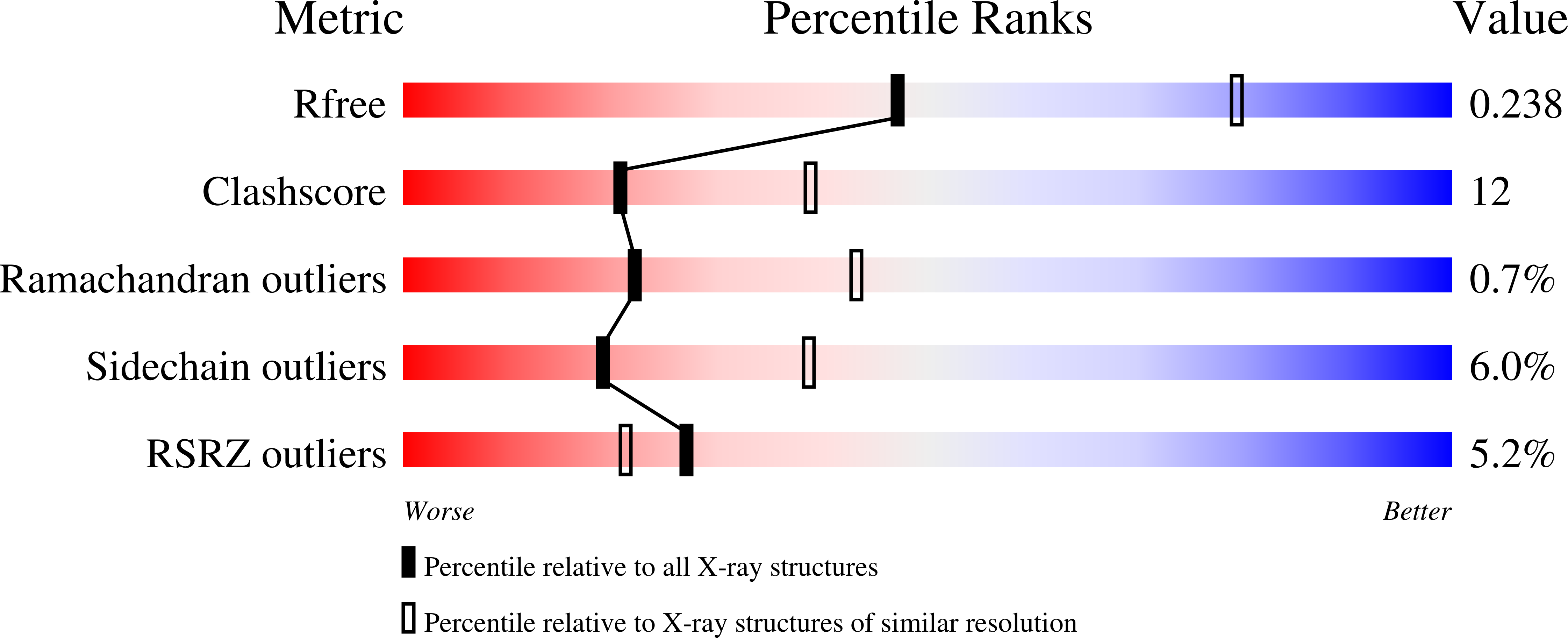Quantitative structural insight into human variegate porphyria disease.
Wang, B., Wen, X., Qin, X., Wang, Z., Tan, Y., Shen, Y., Xi, Z.(2013) J Biol Chem 288: 11731-11740
- PubMed: 23467411
- DOI: https://doi.org/10.1074/jbc.M113.459768
- Primary Citation of Related Structures:
4IVM, 4IVO - PubMed Abstract:
Defects in the human protoporphyrinogen oxidase (hPPO) gene, resulting in ~50% decreased activity of hPPO, is responsible for the dominantly inherited disorder variegate porphyria (VP). To understand the molecular mechanism of VP, we employed the site-directed mutagenesis, biochemical assays, structural biology, and molecular dynamics simulation studies to investigate VP-causing hPPO mutants. We report here the crystal structures of R59Q and R59G mutants in complex with acifluorfen at a resolution of 2.6 and 2.8 Å. The r.m.s.d. of the Cα atoms of the active site structure of R59G and R59Q with respect to the wild-type was 0.20 and 0.15 Å, respectively. However, these highly similar static crystal structures of mutants with the wild-type could not quantitatively explain the observed large differences in their enzymatic activity. To understand how the hPPO mutations affect their catalytic activities, we combined molecular dynamics simulation and statistical analysis to quantitatively understand the molecular mechanism of VP-causing mutants. We have found that the probability of the privileged conformations of hPPO can be correlated very well with the k(cat)/K(m) of PPO (correlation coefficient, R(2) > 0.9), and the catalytic activity of 44 clinically reported VP-causing mutants can be accurately predicted. These results indicated that the VP-causing mutation affect the catalytic activity of hPPO by affecting the ability of hPPO to sample the privileged conformations. The current work, together with our previous crystal structure study on the wild-type hPPO, provided the quantitative structural insight into human variegate porphyria disease.
Organizational Affiliation:
State Key Laboratory of Elemento-Organic Chemistry, Department of Chemical Biology, College of Chemistry, Nankai University, Tianjin 300071, China.

















